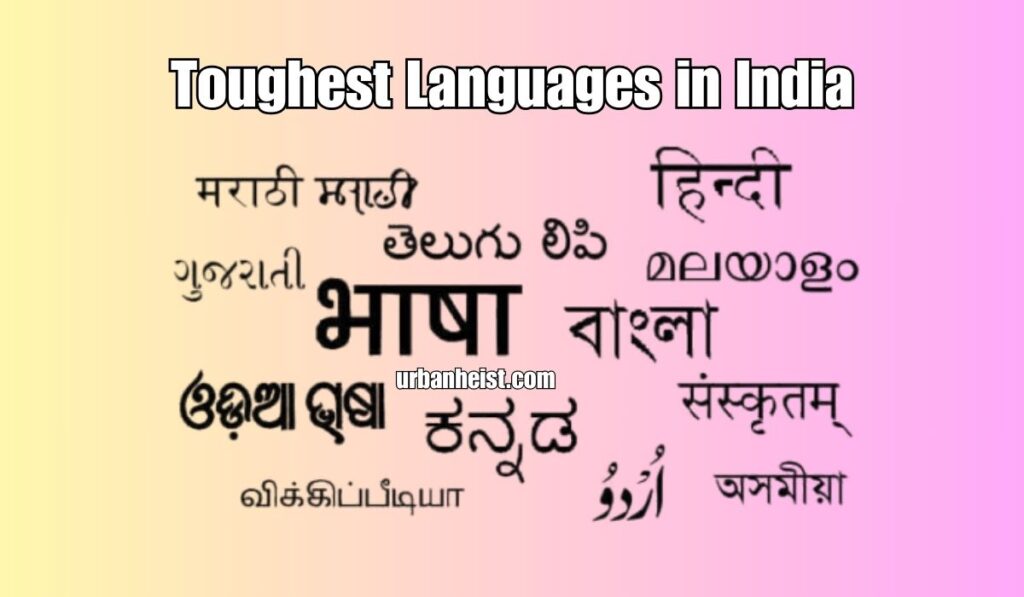When we discuss the most multilingual countries in the world, India undoubtedly stands out. This distinction is not just due to the sheer number of languages spoken within its borders, but also because some of these languages are among the oldest and most unique in the world. Among the myriad languages spoken across the country, a few are particularly challenging to learn and understand. If you are curious to know more about these difficult languages, you are in the right place. Let’s dive into the top five toughest languages in India, which are notoriously difficult to master.
Top 5 Toughest Languages In India
1. Malayalam
Malayalam, the language of Kerala and the Lakshadweep Islands, is often considered one of the toughest languages in India. What makes Malayalam particularly challenging is its extensive alphabet, which comprises 15 vowels and 36 consonants, resulting in a total of 51 distinct sounds. However, the complexity doesn’t end there. Malayalam is not a monolithic language; it varies significantly depending on the region within Kerala and even from one household to another among the nearly 40,000 villages in the state. For learners, this means navigating a maze of dialects, each with its own nuances in accent, grammar, and vocabulary. Additionally, Malayalam boasts a vast literary tradition, adding another layer of difficulty for those trying to master it.
2. Telugu
Telugu, spoken predominantly in Andhra Pradesh and Telangana, is another language that poses a significant challenge for learners. The structure of Telugu is unique, with a word order that can be puzzling for beginners. Words are often strung together into long sequences, creating new meanings within each sentence. This can make sentence construction particularly difficult for those new to the language. Telugu’s script is syllabic, consisting of 18 vowels and 36 consonants, where each symbol represents a syllable rather than just a sound. Moreover, Telugu has a rich literary history, with inscriptions dating back to the early 6th century CE, reflecting its deep-rooted cultural significance.
3. Sanskrit
Sanskrit, often regarded as the foundation of India’s linguistic and cultural heritage, is one of the most complex languages to learn. Its grammar, developed by the ancient scholar Pāṇini, is intricate and highly structured. The language’s extensive vocabulary is primarily composed of root words, allowing for thousands of compound combinations. This makes Sanskrit particularly challenging for learners. Beyond its grammatical complexity, Sanskrit has always been revered for its ability to express subtle nuances across a broad range of disciplines, including philosophy, science, and religion. Interestingly, once mastered, Sanskrit allows for communication using fewer words, making it one of the most efficient languages in the world.
4. Tamil
Tamil, with a history spanning over 2,000 years, is one of the oldest languages still in use today. As a member of the Dravidian language family, it is primarily spoken in Tamil Nadu and parts of Sri Lanka’s Northern and Eastern Provinces. Tamil’s complexity arises from its diglossia, the significant difference between its classical literary form and the everyday spoken variety. The language has 12 vowels, 18 consonants, and a unique character, adding to its complexity. Tamil’s rich literary tradition, from ancient Sangam literature to modern works, presents a vast array of linguistic challenges for learners.
5. Urdu
Urdu, an Indo-Aryan language heavily influenced by Persian and Arabic, is renowned for its poetic elegance and literary sophistication. It is written in the Nastaliq script, a style known for its artistic beauty but also its complexity. As the national language of Pakistan and widely spoken in India, Urdu is admired for its refined vocabulary and poetic forms. However, the complexity of its script, combined with the intricacies of its grammar and vocabulary, makes Urdu a challenging language to master.
Final Thoughts
In conclusion, mastering any of these languages is no small feat. The toughest languages in India, such as Malayalam, Telugu, Sanskrit, Tamil, and Urdu, are not just difficult to learn but also rich in history and cultural significance. If you are proficient in two or more of these languages, you are undoubtedly a sharp-minded individual capable of learning any language in the world with enough effort and dedication.


